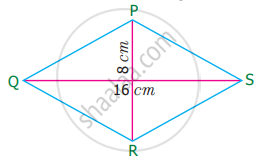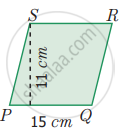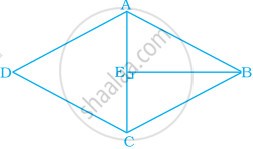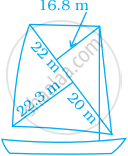Advertisements
Advertisements
Question
If the diagonals of a rhombus get doubled, then the area of the rhombus becomes ______ its original area.
Solution
If the diagonals of a rhombus get doubled, then the area of the rhombus becomes 4 times its original area.
Explanation:
We know that,
Area of a rhombus = `1/2 xx d_1 xx d_2`
Where, d1 and d2 are diagonals of the rhombus.
If diagonals get doubled, then the area = `1/2 2d_1 xx 2d_2 = 4(1/2 xx d_1 xx d_2)`
Hence, the new area becomes 4 times its original area.
APPEARS IN
RELATED QUESTIONS
Each side of a rhombus is 18 cm. If the distance between two parallel sides is 12 cm, find its area.
The diagonals of a rhombus are 18 cm and 24 cm. Find:
(i) its area ;
(ii) length of its sides.
(iii) its perimeter
A thin metal iron-sheet is rhombus in shape, with each side 10 m. If one of its diagonals is 16 m, find the cost of painting both sides at the rate of ₹ 6 per m2. Also, find the distance between the opposite sides of this rhombus.
Find the area of rhombus PQRS shown in the following figure.
Find the area of rhombus PQRS shown in the following figure.
A sweet is in the shape of rhombus whose diagonals are given as 4 cm and 5 cm. The surface of the sweet should be covered by an aluminum foil. Find the cost of aluminum foil used for 400 such sweets at the rate of ₹ 7 per 100 sq.cm
The area of the rhombus with side 4 cm and height 3 cm is
The area of the rhombus is 128 sq.cm and the length of one diagonal is 32 cm. The length of the other diagonal is
What is the area of the rhombus ABCD below if AC = 6 cm and BE = 4 cm?

Most of the sailboats have two sails, the jib and the mainsail. Assume that the sails are triangles. Find the total area sail of the sailboats to the nearest tenth.

